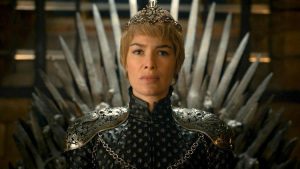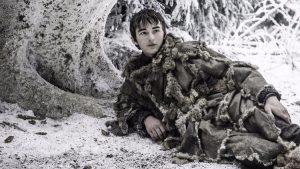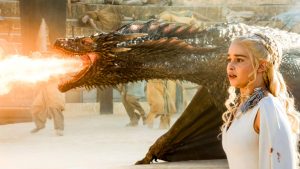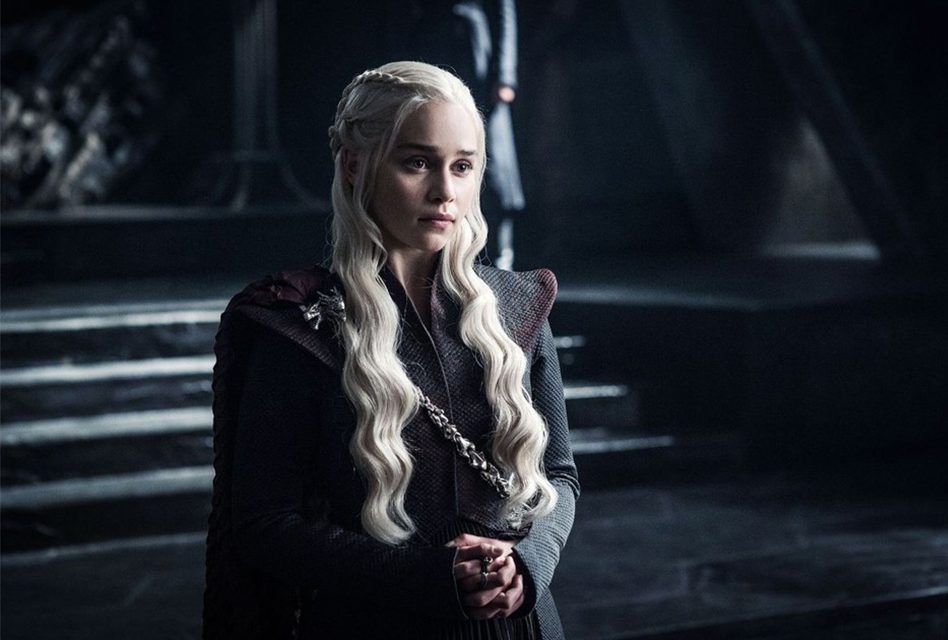Some may find Game of Thrones to be anything but “positive,” but none the less, it’s certainly one of the most popular TV series watched during these modern binge watching times. Game of Thrones is not for the faint of heart as it shows some of the worst of what humans can be, but it is, inarguably, the king of the TV water-cooler. There’s no other show around currently that maintains total command of the pop-culture conversation every week like Thrones does each season. Unlike so many “modern culture series” the HBO fantasy epic is still a show you have to watch live rather than wait to binge. And yet, as the series returns for its seventh and penultimate season tonight, July 16th on HBO, even avid fans could be forgiven for not quite remembering where things in Westeros last left off.
 So much coverage of Game of Thrones focuses on the eponymous struggle—the bloody jockeying for control of Westeros’s Iron Throne that has raged on for years. In “The Winds of Winter,” the last episode of Season 6, Queen Cersei finally got what she wanted—unobstructed control of the throne—after blowing up the Sept of Baelor in the capital city of King’s Landing and eliminating her chief rivals, Queen Margaery Tyrell and the religiously fanatic High Sparrow. All it cost her was the life of her only surviving child King Tommen (who killed himself in sorrow over Margaery’s death) and whatever remained of her humanity.
So much coverage of Game of Thrones focuses on the eponymous struggle—the bloody jockeying for control of Westeros’s Iron Throne that has raged on for years. In “The Winds of Winter,” the last episode of Season 6, Queen Cersei finally got what she wanted—unobstructed control of the throne—after blowing up the Sept of Baelor in the capital city of King’s Landing and eliminating her chief rivals, Queen Margaery Tyrell and the religiously fanatic High Sparrow. All it cost her was the life of her only surviving child King Tommen (who killed himself in sorrow over Margaery’s death) and whatever remained of her humanity.
The closing moments of Season 6, with the camera tightly focused on Cersei’s face as she sat on the Iron Throne, suggested as much—she was less triumphant (the thrill of victory passed once she realized Tommen was dead) than grimly determined. The power is hers now, but she has little else left, and she’s surrounded by citizens who bear no love for her (her coronation didn’t get any cheers) and twisted advisers like Maester Qyburn (a mad scientist) and the Mountain (a mute, zombified corpse). We’ve yet to see her confrontation with Jaime—her brother and Tommen’s father—but the look of horror on his face when he returned to the smoking wreck of King’s Landing said it all.

In Season 7, Cersei is now gearing up for rebellion on at least three different fronts, with only her family’s Lannister forces committed to protecting her. In the north is Jon Snow, who has retaken the Stark lands alongside the re-emerged Sansa, and has been proclaimed “King in the North” after defeating the nasty Bolton occupation. Jon has always wrestled with his sense of duty—he knows there’s a zombie invasion coming from the frosty lands of the White Walkers—but he’s also long nursed a desire for vengeance over the death of his “father” Ned in the show’s first season. I say “father” because, of course, Jon’s true parentage was confirmed at the end of last season. He’s the progeny of a Stark and a Targaryen—the son of Ned’s sister, Lyanna, and the former Mad King’s son, Rhaegar Targaryen, which makes him more uniquely suited to the Westerosi throne than he knows.
 In the south are the rebellious Dornish, nursing a decades-long grudge against the Lannisters and, in particular, the Mountain. The nearby Tyrells allied with them in the last episode, with the ruthless Lady Olenna Tyrell looking to avenge the death of Margaery (and her useless son Mace) at the hands of Cersei. They look to be partnering with Rhaegar’s sister, Daenerys, arriving from the east by boat, who has finally gotten herself together and left the show’s distant worlds of Essos to conquer her homeland, allied with the navy of the Iron Islands and the horse-riding Dothraki, and with three fire-breathing dragons in tow. While Jon is bound to leadership by a sense of duty, Daenerys sees herself as a liberator, a queen steeped in moral righteousness who freed slaves across the sea for the greater good.
In the south are the rebellious Dornish, nursing a decades-long grudge against the Lannisters and, in particular, the Mountain. The nearby Tyrells allied with them in the last episode, with the ruthless Lady Olenna Tyrell looking to avenge the death of Margaery (and her useless son Mace) at the hands of Cersei. They look to be partnering with Rhaegar’s sister, Daenerys, arriving from the east by boat, who has finally gotten herself together and left the show’s distant worlds of Essos to conquer her homeland, allied with the navy of the Iron Islands and the horse-riding Dothraki, and with three fire-breathing dragons in tow. While Jon is bound to leadership by a sense of duty, Daenerys sees herself as a liberator, a queen steeped in moral righteousness who freed slaves across the sea for the greater good.
Then there are the show’s other heroes who aren’t vying to rule the continent: Arya Stark has become an avenging angel, an assassin who broke free from her training with the Faceless Men but retained their stealthy skills. It’s hard to see how she’d find her way back into the show’s courtly politics, or why she’d want to. Her brother Bran has turned into a literal flashback machine, designed to peer into the show’s past with his psychic powers and learn things the audience needs to know. Cersei’s brother Tyrion, meanwhile, is seeking his own form of redemption and revenge wrapped up in one job: serving Daenerys in her quest to reclaim Westeros.

The question of Season 7 will not so much be who to root for, but whether these various leaders will develop the self-awareness and humility seemingly needed to rule, or whether they’ll be crushed by the power that comes with it. The ending of George R. R. Martin’s original A Song of Ice and Fire books, which the show has now outpaced, has long pointed toward some obvious conflicts. Daenerys would always eventually come over to Westeros with her dragons, Jon was always going to take control in the north, and Cersei’s hold on power was always going to grow more and more tenuous. But that clash, or any predictable alliance—like one between “ice” (Jon) and “fire” (Daenerys)—is something Martin has said he wants to avoid, as he has never enjoyed taking the easy narrative paths.
That’s why Martin is taking so long to finish his saga in book form, but the vagaries of TV scheduling demand an ending, and with 13 total episodes to go (Season 8 will be even more abridged), I have to believe there’s something more surprising ahead than a straightforward war for the throne, followed by a battle with the advancing White Walkers. Will Arya cross any more names off her list? Will Jaime finally abandon the Lannister name entirely? Does the scheming Littlefinger have any remaining cards up his sleeve?
These questions and many more will certainly be a part of a multitude of discussions after tonight’s Game of Thrones restart.
– David Sims, the Atlantic


















